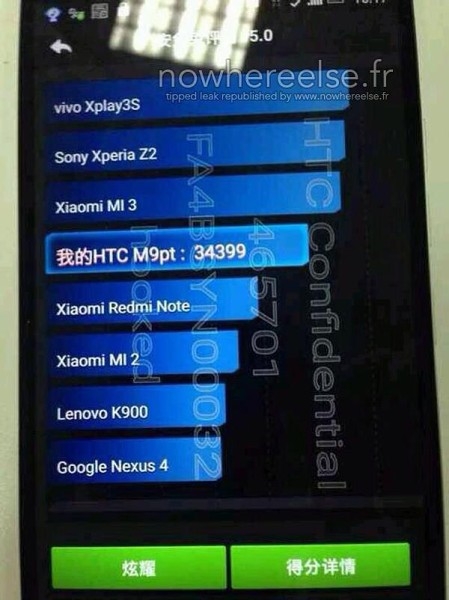AXGIO Windows 8.1 Intel Atom Z3735F Quad-core 2GB/32GB Mini PC TV BOX + USB2.0 High Speed 4 Port Hub Adapter
Mini PC
Intel Quad-core Chip
The Intel Atom Z3735F is a power-efficient quad-core SoC.It is clocked at 1.33 - 1.83 GHz. The specially optimized 22nm low-power design process (P1271) with Tri-Gate transistors, performance and energy efficiency have been significantly improved compared to its predecessor.
Operate Windows8.1 OS
Windows 8.1 is a version of the Windows NT operating system and an upgrade for Windows 8. In Windows 8.1, the Start screen is squarely the user's.
2GB RAM & 32GB
Powered by Quad-core processor.Stop restricting yourself to just one app at a time as the 2GB RAM lets you multi task effortlessly. 32GB ROM, allows you to experience fast data reading speed
Pre-install office 365
Whether you’re working in your office or on the go, you get a familiar, top-of-the-line set of productivity tools.
Super Strong Expansibility
Support USB and micro SD card slot, max up to 64GB
Net weight: 44 g / 1.55 oz
Size: 110 x 38 x 9 mm / 4.33 x 1.5 x 0.35 inch
4-in-1 HUB
Friendly & ergonomic design, easy & portable to use
Plug & play, no driver required
Individual port over-current protection
Hi-speed 1 upstream and 4 downstream USB port
USB2.0 and backwards compatible with USB1.1
Supports up to 127 HI-Speed devices
Supports data transfer rate at 1.5/12/480Mbps
Provides up to 500mA per port, sufficient for diverse devises
Supports windows98/ 2000/ Me/ XP/ VISTA
Supports Mac OS 8.6 or above
Size: 115 x 35 x 20mm
Wire Length: 38cm
Packaged Weight: 67g
http://www.tinydeal.com/axgio-windows-81-z3735f-2gb32gb-mini-pc-mini-4-port-usb-hub-p-145177.html
Think about what a phone is. It’s a device that lets people talk to each other remotely by converting sound waves into transmissible signals. For more than 100 years, phones changed very little. As cell phones took off, our conversations broke free of fixed positions, but we were still using gadgets made to move voices, not files. Then touchscreen smartphones changed everything. According to US government data, 16 percent of American homes didn’t have a landline in 2006. That was just before the iPhone came out. Today it’s more than 40 percent. More and more, when we talk, it’s on our smartphones.
Yet what we really use these devices for, according to network operations powerhouse Ericsson, is to move data—increasingly over the 4G wireless tech called LTE. You might think LTE just means a faster Instagram feed. It does. But LTE is also the main reason our smartphones are getting so large. Power-hungry LTE devices want bigger batteries. Bigger batteries mean bigger phones. It’s no coincidence that Apple, Samsung, LG, and Google have all rolled out 6-inch phonelike flagships since the end of 2013.
I say phonelike because, come on, these are tablets. They barely fit into a front pocket. They won’t fit into a back pocket—or at least not most back pockets. The average Levi’s have a back-stash that’s just 5.25 inches deep.
So is that a tablet in your pocket? Yes. LTE didn’t just change our phones into things that look like tablets; it also changed them into things that act like tablets. Older cell networks, even 3G, used dedicated connections to move your voice, just like a landline. But LTE turns your voice into data packets like the rest of Internet traffic. Until last year, carriers were mostly using older networks and technologies to carry voice calls, but now everything’s moving to voice over LTE, or VoLTE. It’s basically VoIP—like Skype.
So why do we still need voice plans? Dunno. You can get LTE on any decent tablet. And with LTE, you can send and receive calls with Skype and its ilk even, say, on the bus. You can send text messages with services like WhatsApp. You can port your existing mobile number over to Google Voice and continue calling and texting, from the exact number you have right now, on your iPad.
Meanwhile, at NPR's All Tech Considered blog, Aarti Shahani goes to a tech show, looks at good low-cost Asian phones, and asks a question:"When It Comes To Smartphones, Are Americans Dumb?".
The vendors at the Asia wing make a good sales pitch, but they've also got money at stake. So I wander through the convention in search of experts who don't — and find Greg Harper.
He's the kind of rigorous (or obsessive) expert you wish were whispering into your ear while you're phone shopping. "In terms of smartphones, I have 28 active [phone] numbers," Harper says. "And I have no idea how many actual phones I own. It's in the hundreds."
Harper swears by his Asian phones.
"The [Xiaomi] Mi5 is a very, very good phone, and the OnePlus. Those are the two phones I'm using right now," he says.
His favorites cost $300 to $400 — about half the price of a top-end, unsubsidized Apple or Samsung, and he says they're just as good. They run on Android, so you can use all the same Google apps.
Korea-based Samsung is, in fact, taking a beating on its home turf. Because it was so focused on Americans who'll spend a lot of money, it lost the huge market in Asia. One company called Xiaomi has risen so fast it's now the third-largest smartphone-maker in the world.
I'll note that I've consistently used Huawei phones for the past several years, with no complaints.
























![[Image: 1_zpsreturtem.jpg]](http://i1056.photobucket.com/albums/t379/yandexrhino/1_zpsreturtem.jpg)
![[Image: 2_zpscno1xjma.jpg]](http://i1056.photobucket.com/albums/t379/yandexrhino/2_zpscno1xjma.jpg)
![[Image: 3_zpsm7yvbm6y.jpg]](http://i1056.photobucket.com/albums/t379/yandexrhino/3_zpsm7yvbm6y.jpg)
![[Image: 4_zpszw1633xt.jpg]](http://i1056.photobucket.com/albums/t379/yandexrhino/4_zpszw1633xt.jpg)
![[Image: 1_zpsmkpwzhcb.jpg]](http://i1056.photobucket.com/albums/t379/yandexrhino/1_zpsmkpwzhcb.jpg)
![[Image: 2_zps0iyadqkb.jpg]](http://i1056.photobucket.com/albums/t379/yandexrhino/2_zps0iyadqkb.jpg)
![[Image: 1_zpseokggo7l.png]](http://i1056.photobucket.com/albums/t379/yandexrhino/1_zpseokggo7l.png)
![[Image: _zpsgnicahel.png]](http://i1056.photobucket.com/albums/t379/yandexrhino/_zpsgnicahel.png)
![[Image: 3_zpskuzxsddy.png]](http://i1056.photobucket.com/albums/t379/yandexrhino/3_zpskuzxsddy.png)
![[Image: 5_zpsdds4sxjc.png]](http://i1056.photobucket.com/albums/t379/yandexrhino/5_zpsdds4sxjc.png)
![[Image: _zpsismleyfs.jpg]](http://i1056.photobucket.com/albums/t379/yandexrhino/_zpsismleyfs.jpg)
![[IMG]](https://www-techinasia.netdna-ssl.com/wp-content/uploads/2015/01/dmm2-720x315.png)




